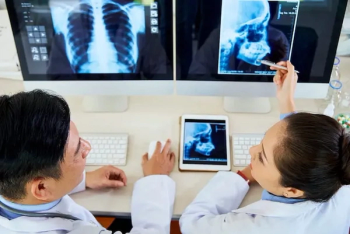
Alternate Radiologists
Radiology, in an imperfect world, can always be improved.
Over the almost-decade (yikes!) I’ve been writing this column, I’ve made reference to some of my nerdly sources of entertainment: Comic books, sci-fi/fantasy TV shows, and movies, etc. I suspect a decent chunk of my reading-audience shares such interests. Indeed, enough of that stuff has gone mainstream that knowing/liking it doesn’t carry much of a nerdish stigma anymore.
So much so, I’d be surprised if anybody hadn’t encountered the concept of alternate realities. Marvel had an entire comic-book series, and I think a forthcoming streaming show dedicated to it (“What If…?”). DC’s version was called “Elseworlds.”
It’s a handy enough plot device, especially back when there was more of a perceived need for fiction to serve as a vehicle for moral/societal commentary. Good ol’ Star Trek had its “Mirror Universe,” not only to entertain viewers with evil versions of Captain Kirk and Mr. Spock, but also to highlight the goodness of the regular characters by comparison.
It even works in reverse: A comic from Marvel just had one of their best villains visit an alternate universe in which his counterpart was a good guy, instrumental in making the world utopian. (The bad guy had intended to reform and do the same back home, but ultimately took exception to something his alternate self said and murdered the guy…then destroyed the alternate universe for good measure.)
So I found myself thinking about what it would be like to encounter a radiologist from a world in which diagnostic imaging, from our perspective, got everything right that we have wrong.
The our-world rad would be wowed, and more than a little envious, to hear about how good the other-world rads had it: They always got relevant, accurate clinical histories for the studies they read. Referrers knew and utilized appropriate modalities and protocols for their clinical questions—or, when they didn’t know what to order, they deferred to their rads for best practices. Support-staff were routinely competent and eager to help (in other words, supportive).
Other-world software worked reliably (“Why wouldn’t it? That’s what it’s there for,” the other-world rad would ask us with genuine puzzlement). When rads or other “stakeholders” identified potential improvements, they were implemented, even invented. Workflow protocols were structured to optimize the performance (and satisfaction) of those doing the work.
Part of the whole alternate-reality gimmick is to see how the otherworldly characters react to how we do things. In this case, with pitying disgust and/or horror. How little control the rads of our world have over their field! They’re held accountable for things they can’t do anything about, and they’re on a perpetual slide towards even less authority. Also less compensation and ever-increasing demands on them. Meanwhile, in the other world, they’re respected professionals, exercising responsible control over their own destinies.
For more coverage based on industry expert insights and research, subscribe to the Diagnostic Imaging e-Newsletter
I half-baked a fictional scenario to showcase this. A this-world radiologist cobbled together the prototype of a new-fangled quantum-imaging scanner, but during a glitchy test-run, the gantry opened a portal to the paradisical alternate reality. On the other side, a similarly-inventive rad quizzically peered through from his prototype machine. Their my-world/your-world discussion ensued.
Before I determined there was no way I was going to fit such a story into the space I use here—I have a hard enough time confining myself as it is—it occurred to me that the story would need a “twist” to be really interesting. Thus, the quantum-gateway would initially showcase the paradisical other world, but later on would hiccup and add a third reality—one far worse off than our own. On the other side of that window, there’d be a beaten-down shred of a rad for whom even our imperfect reality would be the answer to a prayer. Because, let us not forget, no matter how bad one may think things are, they could always be worse.
The plot could have gone any number of ways from there, but a major theme would be the imperfect and hellish-world rads wishing and wondering if there were any realistic ways their societies could take steps to more resemble the paradisical one. And the paradise and imperfect-world rads would consider their less-fortunate counterparts as cautionary tales; what might they do to avoid heading down similar dystopian paths in the future?
My favored notion for an ending had the hellish-world rad concluding that his society was too far gone; no matter what he brought back from this conversation, it would improve nothing. Instead, having seen how things could be so much better, his subsequent life would be that much more torturous. Thus, before the unstable quantum-portal collapsed, the worst-off of the rads climbed through it to live out the rest of his life in the radiology-paradise world.
The imperfect-world rad was invited to join them, but declined: Having seen how good (and bad) things could get, he chose to stay put. He had faith that he could make a difference in his native reality, making things better…or at least preventing them from getting worse.
Which, of course, we can.
Follow Editorial Board member Eric Postal, M.D., on Twitter:
Newsletter
Stay at the forefront of radiology with the Diagnostic Imaging newsletter, delivering the latest news, clinical insights, and imaging advancements for today’s radiologists.




